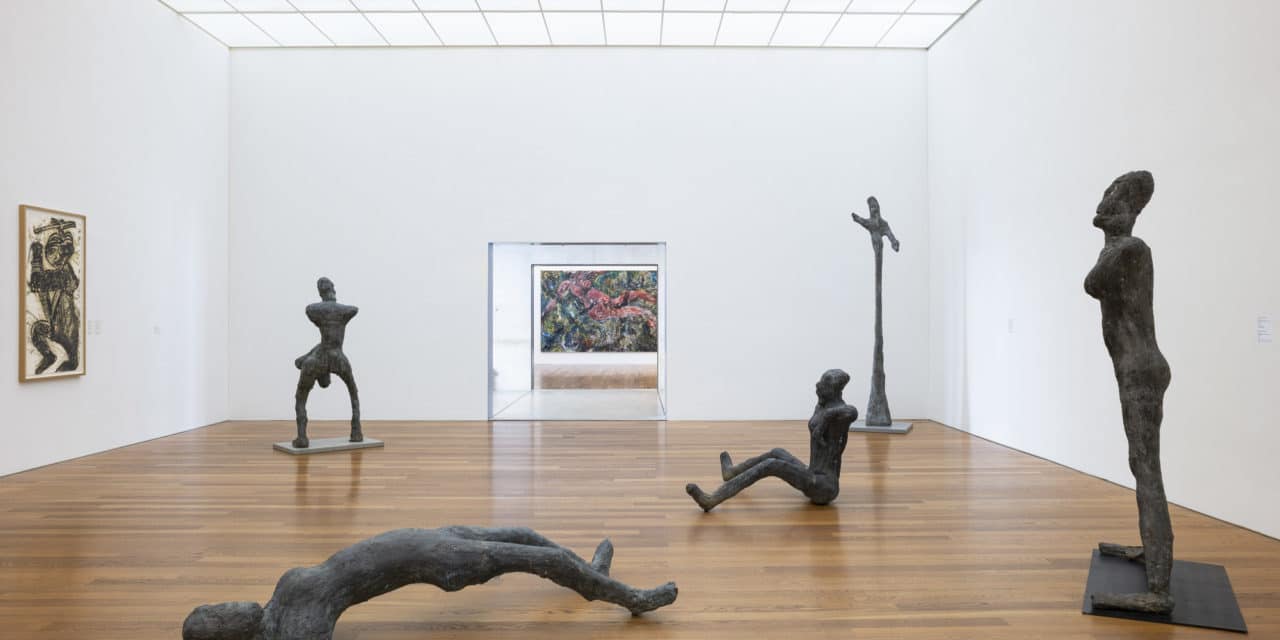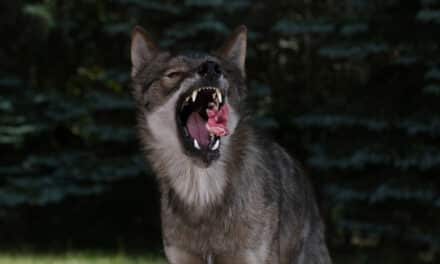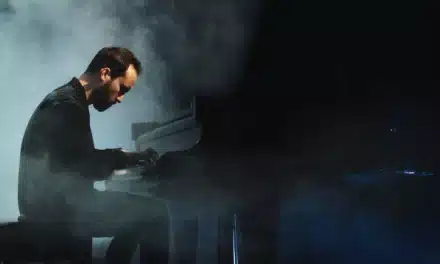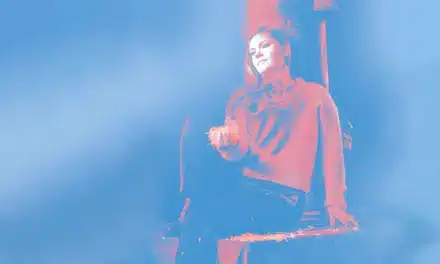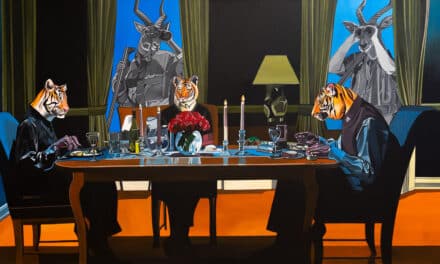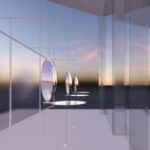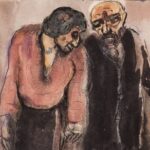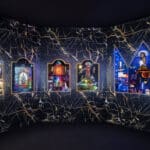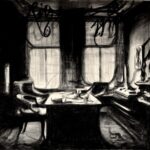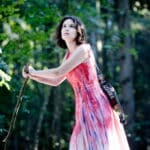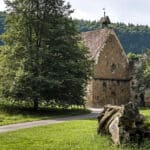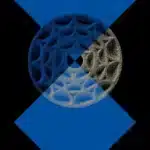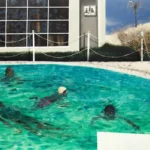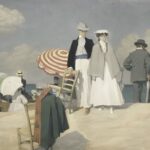Das Kirchner Museum Davos sammelt, bewahrt, erforscht und vermittelt das Werk von Ernst Ludwig Kirchner. Die Sammlung des Kirchner Museum Davos umfasst alle Schaffensperioden von Ernst Ludwig Kirchner von 1904 bis 1938. Sie versammelt darüber hinaus ausgewählte Werke der Brücke-Künstler und anderer Vertreter der klassischen Moderne.
Das Kirchner Museum Davos ist ein kultureller Leuchtturm der Schweiz. Es ist ein Ort der Kontemplation, der Regeneration und der Diskussion. Das Kirchner Museum Davos ist ein weltoffenes, serviceorientiertes und familienfreundliches Museum, das sich an alle Altersstufen und gesellschaftlichen Gruppen wendet.
Theater des Überlebens. Martin Disler – Die späten Jahre
Martin Disler, 1949 in Seewen/CH geboren, war Zeichner, Maler, Bildhauer, Dichter, Autodidakt. Er lebte als ruheloser Reisender in Zürich, Amsterdam, Lugano, Samedan, Mailand und zuletzt in Les Planchettes im Schweizer Jura. Im Alter von nur 47 Jahren ist Martin Disler an den Folgen eines Hirnschlags gestorben.
Die Ausstellung im Kirchner Museum zeigt die letzten zehn Schaffensjahre von Martin Disler in einem spannenden Dialog mit Werken und Schriften von Ernst Ludwig Kirchner aus der Sammlung des Kirchner Museum Davos sowie aus Schweizer privat und öffentlichen Sammlungen.
Zusammenhänge in den verschiedenen Ausdrucksmitteln und Gattungen werden sowohl bei Martin Disler als auch bei Ernst Ludwig Kirchner vertieft. Die Bedeutung des Körpers und seine Rolle im kreativen Akt, Körpersprache, Tanz, Bewegung, Gestik, Ausdruck, Abstraktion und Figuration werden interpretiert und thematisiert.
Neben Malerei, Druckgraphik und Zeichnung, wird die Skulptur einen zentralen Stellenwert einnehmen. Skulpturen von Ernst Ludwig Kirchner verschiedener stilistischen Epochen werden mit einer Auswahl von menschengrossen Bronzeskulpturen Martin Dislers der Werkgruppe «Häutung und Tanz», die in einem intensiven Schaffensprozess in den Jahren 1990-91 realisiert wurde und in der Whitechapel Art Gallery in London, in der Kunsthalle Basel, im Kunstforum der Städtischen Galerie im Lehmbachhaus München, im Wilhelm Lehmbruck Museum Duisburg, 1994 in Castel Grande in Bellinzona und 2019 im Skulpturenpark Waldfrieden präsentiert wurde, das Thema menschliche Figur szenographisch und klassisch zur Schau bringen.
Die Skulpturen Dislers sind Materialisationen eines Körperdenkens. Sie verbildlichen den Menschen in seiner Zerrissenheit und Verwundbarkeit, eine Darstellung der menschlichen Seele, die man in den Holzfiguren und Malereien Ernst Ludwig Kirchners nachvollziehen und als zeitloses „Theaters des Überlebens” verstehen kann.
bis 7. November 2021
Europa auf Kur. Ernst Ludwig Kirchner, Thomas Mann und der Mythos Davos
Seit mehr als 150 Jahren ist Davos ein symbolischer Ort, ein Kristallisationspunkt europäischer Kulturgeschichte und politischer Entwicklungen. Nirgendwo sonst verdichten sich die Hoffnungen und Sehnsüchte, die Ängste und Bedrohungen des späten 19. und frühen 20. Jahrhunderts in vergleichbarer Form. Die Allgegenwart gesundheitlicher Gefahren schaffte damals wie heute ein Gefühl der Dauerkrise. Gleichzeitig nährt der medizinisch-technologische Fortschritt den Wunsch nach einem langen, gesunden Leben. Die Hochgebirgsluft versprach Heilung von der Infektionskrankheit Tuberkulose, die Jahr für Jahr zigtausend Menschen dahinraffte. Davos erkannte seine Chance und wandelte sich seit 1870 in kürzester Zeit vom abgelegenen Bergdorf zum international renommierten Lungenkurort.
Gleichzeitig begriff man das neue Potential des Sports und baute systematisch das bis heute gültige Image einer Wintersport-Destination auf. Davos gelang es immer wieder, sich neu zu erfinden. In Davos traf sich, was Rang und Namen hatte: Ernst Ludwig Kirchner, Katia und Thomas Mann, Arthur Conan Doyle aber auch Robert Louis Stevenson, Albert Einstein oder Sonja Henie, die erfolgreichste Eiskunstläuferin aller Zeiten. Die Ausstellung erzählt ihre Geschichten – die tragischen wie die erfolgreichen. Ernst Ludwig Kirchner kehrte der Metropole Berlin den Rücken, um für immer in Davos zu bleiben. Seine Bilder feiern die Alpenwelt als paradiesischen Ort des friedlichen Miteinanders. Thomas Manns Roman Der Zauberberg begreift Davos als Sinnbild für die Träume und die Katastrophen Europas.
Erstmalig ist Davos Thema einer so umfangreichen Ausstellung. Der Ort steht exemplarisch für die Komplexität und Zerrissenheit der Moderne und macht europäische Kulturgeschichte sichtbar. Die Ausstellung zieht Verbindungslinien zwischen Medizin- und Kurgeschichte, Architektur, Wintersport, Kunst und Literatur, Philosophie und Politik. Sämtliche Schwerpunkte und Einzelaspekte werden in einem reich bebilderten Katalog vertieft und erweitert.
Die in der Ausstellung gezeigten Meisterwerke Ernst Ludwig Kirchners eröffnen einen neuen Blick auf das kulturelle Leben Europas zur Zeit der Jahrhundertwende. Weitere, zum Teil erstmals ausgestellte Leihgaben stammen aus dem Heimat- und Sportmuseum Davos, der Medizinhistorischen Sammlung Davos und der Dokumentationsbibliothek Davos. Die Original-Tagebücher, Notizen und Fotografien aus dem Thomas-Mann-Archiv der ETH Zürich dokumentieren eindrucksvoll die Geschichte von Thomas Manns Roman „Der Zauberberg”.
28. November 2021 bis 30. Oktober 2022

